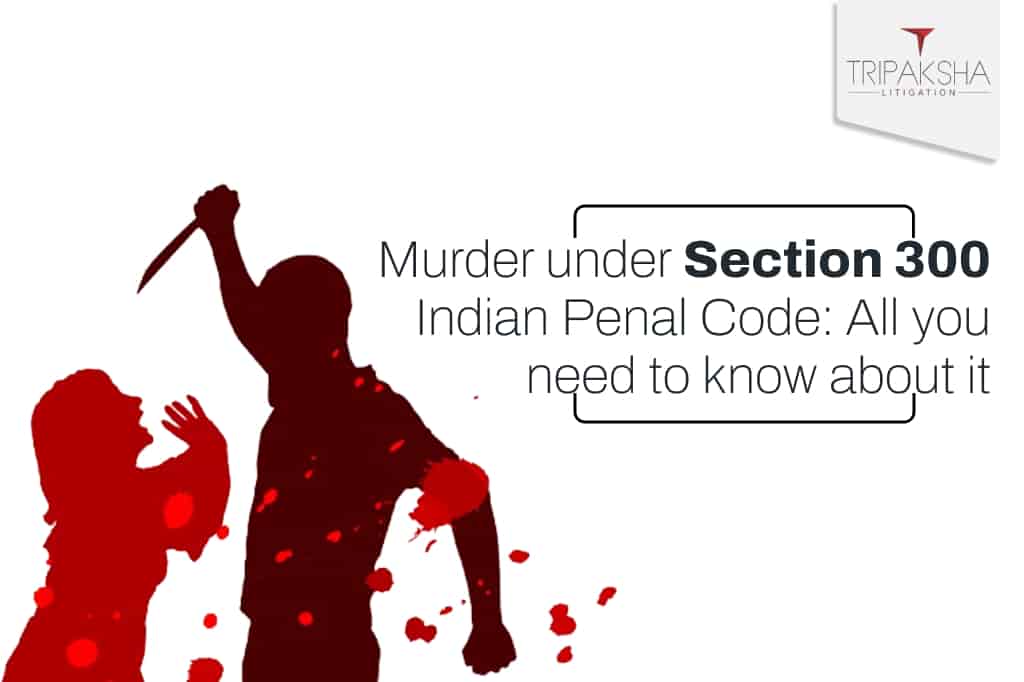Introduction: Section 299 and Section 300 of Indian Penal Code deals with murder. All murders are culpable homicides but all culpable homicides are not murders. Culpable Homicide is genus and murder are its species, thus, murder is a culpable homicide but all culpable homicide is not murder. Murder is defined under Section 300 of the Indian Penal Code. According to this Act, culpable homicide is considered as murder if:
- The act is committed with an intention to cause death.
- The act is done with the intention of causing such bodily injury which the offender has knowledge that it would result in death.
- The person has the knowledge that his act is dangerous and would cause death or bodily injury but still commits the act, this would amount to murder.
Ingredients of Murder:
- Causing death: There should be an intention of causing death.
- Doing an act: There should be an intention to cause such bodily injury that is likely to cause death
- The act must be done with the knowledge that the act is likely to cause the death of another.
Case law: Reg. vs Govinda In this case the accused had knocked down his wife, kept a knee on her chest and gave two to three violent blows with the closed fist on her face. This act produced extraversion of blood on her brain and afterwards, the wife died due to this. The act was not committed with the intention of causing death and the bodily injury was not sufficient to cause death in the ordinary course of nature. The accused was liable to culpable homicide not amounting to murder.
Exceptions to Section 300 of IPC where culpable homicide is not considered as murder
Sudden and grave provocation
If a person is provoked suddenly and severely to the point where they lose their ability to control themselves, as a result they unintentionally cause the death of either the person who provoked them or someone else, then this can be considered a mitigating circumstance in their offense.
This exception is subject to a certain proviso, that is:
- The provocation is not sought or is voluntarily provoked by the offender to be used as an excuse for killing or causing any harm to the person.
- The provocation is not given by anything that is done in obedience to the law, or by a public servant while exercising the powers lawfully of a public servant.
- The provocation is not done while doing any lawful exercise of the right of private defence.
Case laws: K.M. Nanavati vs State of Maharashtra In this case, the Supreme Court had extensively explained the law relating to provocation in India. It was observed by the Court:
- The test of “sudden and grave provocation” is whether a reasonable man, who belongs to the same society as the accused, is placed in the situation in which the accused was placed would have been so provoked as to lose his self-control.
- Under certain circumstances, words and gestures may also lead to sudden and grave provocation to an accused, so as to bring his act under an exception.
- The mental background of the victim can be taken into consideration, taking account of his previous act to ascertain whether the subsequent act leads to sudden and grave provocation for committing the offence.
- The fatal blow clearly should trace the influence of passion that arises from the sudden and grave provocation. It should not be after the provocation has been cooled down due to lapse of time, otherwise, it will give room and scope to the accused for altering the evidence.
Conclusion: The Court awards death penalty only in rarest situations only in cases where the accused is a threat to the society aa the Court understands the value of life. The Court has all the rights and power to reduce the punishment.
You may contact me for consultation or advice by visiting Contact Us and Call us

